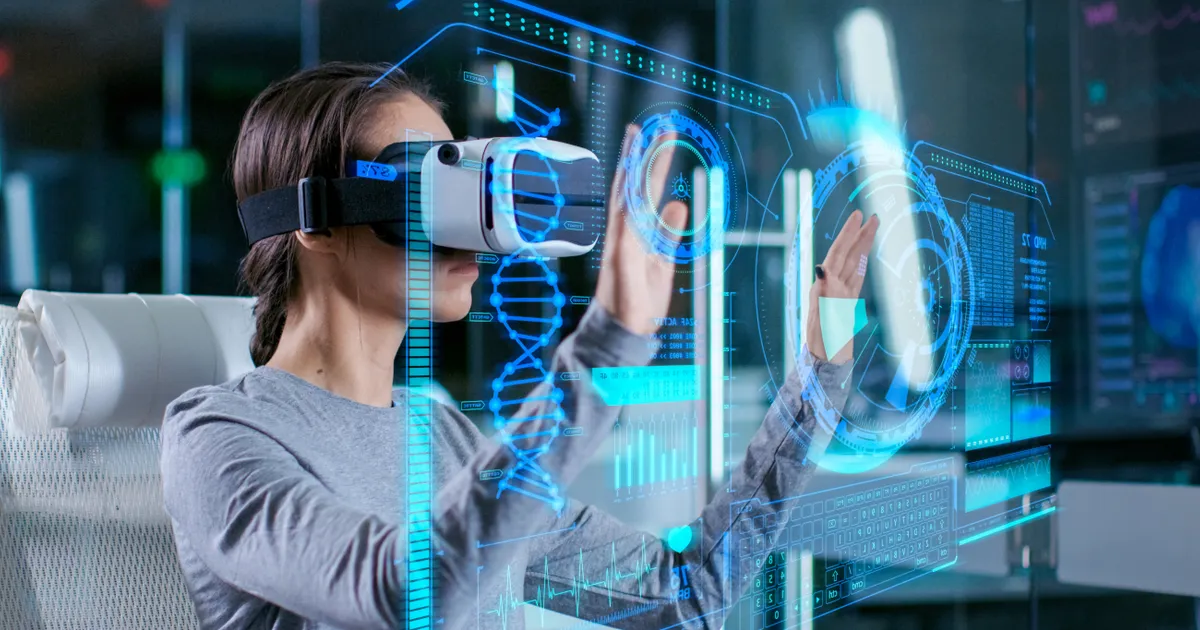The tech sector is no stranger to rapid change. We’ve come a long way from the calculator, and it’s safe to assume that we haven’t seen anything yet. Big tech is investing big money on a novel way to interface with the digital world. The advent of consumer AR and VR devices is upon us, and it has the potential to revolutionize the ways we work and play. Today, we’ll take a closer look at this exciting new field, explore the ways in which it could reshape our digital world, and explore the latest tech stealing headlines all over the world. Start a search today to learn more about spatial computing and to find great deals on the latest VR and AR technologies.
 Shutterstock: Gorodenkoff
Shutterstock: GorodenkoffWhat is Spatial Computing?
Spatial computing is a term used to describe a set of technologies that, combined, aim to seamlessly blend the physical and digital worlds.1 It captures a range of technologies such as augmented reality (AR), virtual reality (VR), mixed reality (MR), computer vision, AI, and sensor technologies, all of which are integrated to provide immersive and interactive experiences. The idea is to break away from the constraints of flat screens and enable users to interact with digital content in the same way they interact with the real world.
The Potential Impact of Spatial Computing
The advent of spatial computing could fundamentally transform our interaction with technology and reshape entire industries.2 Here’s a glance at some of the areas where spatial computing is poised to make a significant impact:
- Communication: By facilitating immersive teleconferencing, spatial computing could enable users to virtually congregate in the same room, enriching remote collaborations and social interactions.
- Manufacturing: It can aid in designing and testing products in a virtual environment, thereby reducing costs and accelerating the development process.
- Healthcare: Spatial computing can be used to practice complex surgeries in a risk-free, virtual environment, improving the outcomes of real-world procedures.
- Education: It can revolutionize learning by enabling immersive, interactive experiences that go beyond traditional teaching methods.
- Entertainment: Spatial computing can redefine gaming and other entertainment experiences, making them more immersive and interactive than ever before.
These transformations represent just the beginning, and as the technology matures, we can expect even more industries to reap the benefits of this groundbreaking technology.
Introducing the Apple Vision Pro
One of the pioneering devices leading the way in spatial computing is the Apple Vision Pro.3 Revealed in 2023, it has taken the tech world by storm with its groundbreaking features. Apple Vision Pro combines AR and VR capabilities to provide a seamless experience that bridges the gap between reality and the digital world.
It boasts of high-resolution visuals, intuitive controls, and unparalleled user comfort. Furthermore, with its deep integration into the Apple ecosystem, it unlocks a whole new range of possibilities for applications across diverse sectors.
Meta Quest 3: A Step into the Future
Meta, previously known as Facebook, has also launched its flagship spatial computing device – the Meta Quest 3. The device is equipped with cutting-edge VR technology and a strong focus on social connectivity.4
It encourages users to step into a whole new world of immersive gaming, productivity applications, and social experiences. The Quest 3, like its predecessors, is designed to bring VR to the mainstream and is a testament to Meta’s commitment to a more connected, immersive future.
The Current State of Virtual Reality
Virtual reality, a core component of spatial computing, is currently experiencing rapid advancements. Headsets are becoming more powerful and affordable, content is becoming more varied and high-quality, and companies are investing heavily in improving the user experience.
While VR has been around for a while, its widespread adoption is still limited due to various factors such as cost and lack of content. However, with the arrival of devices like the Apple Vision Pro and the Meta Quest 3, the tide seems to be turning, bringing VR one step closer to mainstream adoption.
Start A Search Today!
By bridging the digital and physical worlds, spatial computing offers a new way to interact with technology that is more natural and intuitive. Companies like Apple and Meta are already leading the way with innovative devices like the Vision Pro and Quest 3, pushing the boundaries of what’s possible.
As technology evolves, the full potential of spatial computing will unfold, transforming various industries and redefining our daily experiences. Continue your journey of discovery online and keep up to date with the exciting advancements in the world of spatial computing.